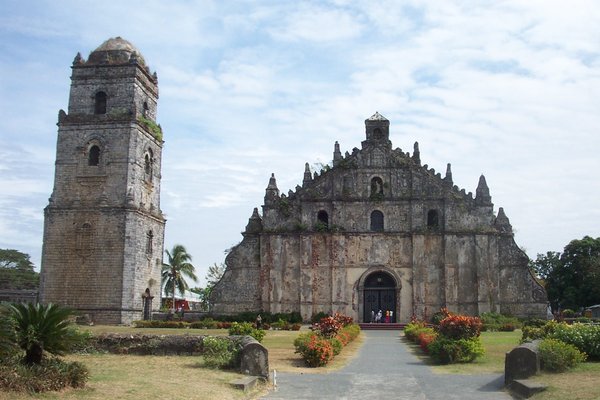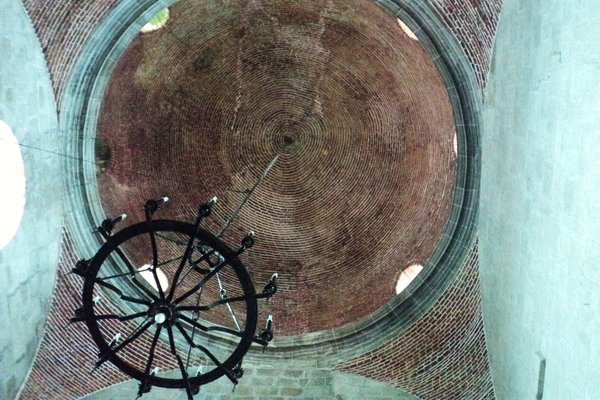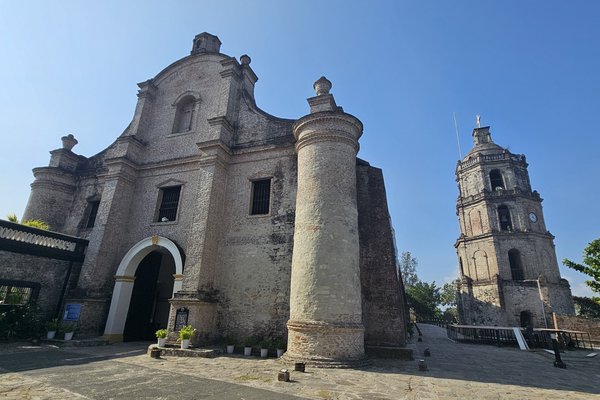Philippines
Baroque Churches
The Baroque Churches of the Philippines represent a fusion of European church design and local construction techniques adapted to the physical conditions.
Their specific characteristics include a separate bell tower and strong buttresses to withstand the powers of earthquakes that are common in the region, giving them a squat appearance. Their interior designs are partly based on local folk iconography. The four included churches showing this Philippine-Hispanic style across the country are San Agustin (Manila), La Asuncion (Santa Maria), San Agustin (Paoay), and Santo Tomas (Miag-ao).
Community Perspective: San Agustin in Manila should be visited for its interior (enter via the monastery), while the Miag-ao and Paoay churches show why it is called ‘Earthquake Baroque’. Filipinos Bernard, Anril Tiatco and GabLabCebu have all well-described the features of the four churches in their reviews.
Site Info
Official Information
- Full Name
- Baroque Churches of the Philippines (ID: 677)
- Country
- Philippines
- Status
-
Inscribed 1993
Site history
History of Baroque Churches
- 1993: Inscribed
- Inscribed
- Type
- Cultural
- Criteria
- ii
- iv
Links
- UNESCO
- whc.unesco.org
- Official
-
- visitphilippines.org — Tourism Philippines
All Links
UNESCO.org
- whc.unesco.org — whc.unesco.org/
Official Website
- visitphilippines.org — Tourism Philippines
News Article
- Nov. 20, 2018 lifestyle.inquirer.net — China-funded bridge risks Unesco World Heritage status of San Agustin church
- Jan. 17, 2014 solarnews.ph — San Agustin replaces ancient statues with cardboard cutouts
- May 3, 2006 news.inq7.net — Celebrations and restorations: Heritage festival opens in Paoay
Community Information
- Community Category
- Religious structure: Christian
Travel Information
Recent Connections
-
Built in the 16th century
Stone church of San Agustin dates from … -
World Monuments Watch (past)
La Asuncion (Urgent need for preservati… -
Tombs
San Agustin church in Manila houses the…
Connections of Baroque Churches
- Geography
-
-
Located in a Capital City
Manila (Capital of the Philippines)
-
- Trivia
-
-
Built or owned by Spanish
Paoay: Building of the present church was started in 1694 by Augustinian friar Father Antonio Estavillo, completed in 1710 and rededicated in 1896 (wiki)
-
- History
-
-
Camino Real
Philippine Camino Real: the two baroque churches in Paoay and Santa Maria
-
- Architecture
-
-
Coral Masonry
Miag-ao Church and Paoay Church -
Baroque
-
- Damaged
-
-
Damaged in World War II
Wiki "The Church of San Agustin ....survived the bombardment of Intramuros by American and Filipino forces with only its roof destroyed, the only one of the seven churches in the walled city to remain standing. The adjacent monastery suffered total destruction. Architect Angel Nakpil designed the rebuilding of the structure as a museum in the 1970s."
-
- World Heritage Process
-
-
Perfect Inscriptions
1993 -
First inscriptions
Philippines: two inscriptions in 1993, with Tubbataha Reefs Natural Park as the lowest number, but the Baroque Churches first in the report. -
Extensions on Tentative List
-
- Religion and Belief
-
-
Augustinian Order
All four churches were established by Augustinians -
Fortified religious buildings
Nuestra Senora de la Asuncion in Santa MariaSee www.wmf.org
-
- Human Activity
-
-
Piracy
The Miag-ao Church, one of the Baroque Churches of the Philippines, became a "fortified church" to counter the attacks and pillaging by pirates.
-
- Constructions
-
-
Tombs
San Agustin church in Manila houses the sepulchre of the conquistador Miguel Lopez De legazpi, among others. -
Gates depicting Lions
the gates of San Agustin Church in Intramuros are adorned with Chinese Lion Dogs (Also called as Fu Dogs) that were given by the Chinese people coexisting with the christians that time. -
Prison
Wiki "During the Japanese occupation of the Philippines during World War II, the Church of San Agustin became a concentration camp for prisoners. Japanese soldiers held hundreds of Intramuros residents and clergy hostage in the church during the final days of the Battle of Manila; many of the hostages died during the three-week long battle" -
Leaning Tower
The bell tower of the Sta. Maria Church -
Freestanding Bell Tower
two of the baroque churches in the Philippines have free standing bellfries -- Paoay Church and Sta. Maria Church. This is one of the characteristics of the "earthquake baroque"
-
- WHS on Other Lists
-
-
World Monuments Watch (past)
La Asuncion (Urgent need for preservation action to prevent further collapses) (2010)
-
- Timeline
-
-
Built in the 16th century
Stone church of San Agustin dates from 1587
-
News
- lifestyle.inquirer.net 11/20/2018
- China-funded bridge risks Unesco W…
- solarnews.ph 01/17/2014
- San Agustin replaces ancient statu…
- news.inq7.net 05/03/2006
- Celebrations and restorations: Her…
Recent Visitors
Visitors of Baroque Churches
- Adam Hancock
- Adrian Turtschi
- Afshin Iranpour
- Alejandro Lau
- Alex Goh
- Alex Marcean
- Ammon Watkins
- Ana
- Artur Anuszewski
- Atila Ege
- bergecn
- Bernard Joseph Esposo Guerrero
- Bill Maurmann
- Boj
- Bram de Bruin
- campmany
- Carlo Medina
- Carlo Sarion
- Carrascu
- Chalamphol Therakul
- chenboada
- Cheryl
- chiuliqi
- Chole Ross
- Christoph
- Clyde
- Corinne Vail
- CugelVance
- cutecid
- czesioszpachelka
- dave wood
- David Scott King
- delacec
- Dimitar Krastev
- disnsam
- Dorejd
- Dylan
- Elisabeth Fransisca Situmorang
- Els Slots
- Eric Lurio
- Erik Jelinek
- Errol Neo
- Eva Kisgyorgy
- Fan Yibo
- Felicité
- Frederik Dawson
- Gabbro
- GabLabCebu
- Garrett
- Gary Arndt
- Gernot
- Harald T.
- Harry Mitsidis
- Hdwilsonau
- headventure
- henryjiao18
- Iain Jackson
- Jacob Choi
- Jana and Matt
- jballard650
- Jeanne OGrady
- Jeffrey Chai
- JL
- Joel on the Road
- Jon Eshuijs
- Jon Opol
- Jonoprout
- Joyce van Soest
- Justin Rickey
- jxrocky
- kamonpetch
- Ken DJ
- Kevin247
- Kevin McFarland
- Kim, Soo-youn
- Kjlauer
- Kurt Lauer
- Kyle Magnuson
- Lameduck99
- lichia
- Linz
- Loic Pedras
- Luis Filipe Gaspar
- Lukasz Palczewski
- Luke LOU
- Maciej Gil
- Marcobrey
- MaxHeAnouBen
- Mia esguerra
- Michael Novins
- Michael Turtle
- Mikan22
- Milan Jirasek
- Miloš Tašković
- MMM
- Morodhi
- Mstrebl1990
- Mtlmr
- Naim Y
- NH1984
- Nick Kuzmyak
- Nicolas
- Nihal Ege
- NoahFranc
- PeterH
- Philipp Leu
- Philipp Peterer
- Pieter Dijkshoorn
- pressdm
- Randi Thomsen
- Reza
- Riccardo Quaranta
- Risson
- Rob Wilson
- Rudegirl
- Sandra!
- S. Anril Tiatco
- Sclowitz
- Sergio Arjona
- Shandos Cleaver
- sibariam
- Slavi
- Solivagant
- Stanislaw Warwas
- stephanvermeulen
- Svein Elias
- SymonMajewski
- Szucs Tamas
- Thomas Buechler
- Thomas van der Walt
- Vanessa Buechler
- Vernon Prieto
- VMThumper
- voyager
- Wojciech Fedoruk
- Xiong Wei
- Xiquinho Silva
- Yi Han Goh
- Zoë Sheng
- Zos M
Community Reviews
Show full reviews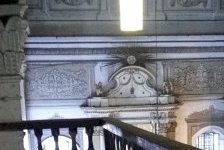
WHS#70
Here in the Philippines, colonial churches are the pinnacle of heritage architecture. The vast majority of cities and towns are completely composed of buildings that did not exist 100 years ago, except for these ancient treasures. However, not all of these churches were made equal, and not all were kept equally preserved, either. That's why the Philippines has its own list of National Cultural Treasures, and it is from this list that 4 churches were chosen to be the very 1st WHS in the country. 2 churches are in the northern Ilocos region, 1 in the center of Manila (the capital city), and 1 in Iloilo in the Visayas. The Ilocano churches, Paoay and Santa Maria, are best-known as outstanding examples of Earthquake Baroque, characterized by thick stone walls, greater width in comparison to height, belfries separate from the body of the church, and of course, the iconic buttresses, which all help the churches to withstand the constant earthquakes in the region. Miag-ao Church in Iloilo is considered the best example of Fortress Baroque, a style developed as a defense against Moro (Philippine Muslim) pirates that used to raid the Visayan islands during the colonial period. Lastly, the San Agustin Church in Manila is the oldest stone church in the Philippines and the only building left standing in Intramuros (the central walled city of Manila, which was home to a staggering 7 churches) after the bombings of Manila in World War 2. Each of the churches is known …
Keep reading 0 comments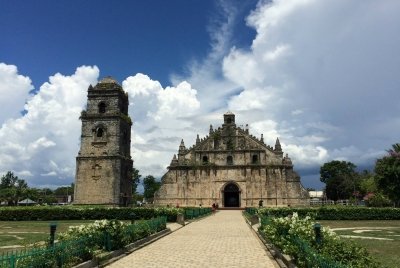
Over five hundred churches, inspired by the baroque, gothic and rococo traditions of Europe, were built in the Philippine archipelago during the Hispanic colonial era. Many of these churches are well preserved and are still being used as places of worship. Many of these are protected by the national government by inscribing them either as National Cultural Property or National Cultural Treasures.
Today, four baroque churches stand out: Church of the Immaculate Conception of San Agustin (San Agustin Church) in Intramuros, Manila; Saint Augustine Church (popularly known as Paoay Church) in Ilocos Norte; Church of Our Lady of the Assumption (popularly known as Santa Maria Church); and Santo Tomas de Villanueva Parish Church (popularly known as Miag-ao Church) in Iloilo. In 1993, these churches were elevated to the status of UNESCO World Heritage Sites (with modification of boundaries in 2013). They are collectively identified as Baroque Churches of the Philippines. According to UNESCO, these churches are peculiar because their unique architectural style is a reinterpretation of European Baroque by Chinese and Philippine craftsmen.
I have visited all four churches: San Augustin Church several times, Paoay Church in 2015, Santa Maria Church in 2018, and Miag-ao in 2017. This post contains some briefs about the churches - some reflections about their magnificence.
San Agustin Church. According to some sources, the church was patterned by the Augustinians from a church in Nueva España (today Mexico). Built by the Augustinians in 1571 within the district of Intramuros (Walled City …
Keep reading 0 comments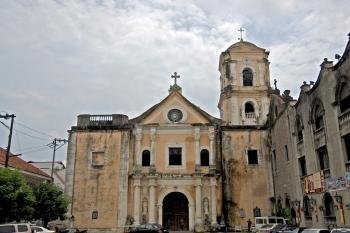
I visited the Church of Church of San Agustin in 2007 and in 2016.
The Baroque Churches of the Philippines are a collection of 4 churches scattered throughout the country.
By far the most popular and visited church is San Agustin in the Intramuros section of Manila. It is the only church to have survived the bombing by the Japanese in WWII in the Intramuros.
In addition to being a functioning church, it is also home to a museum documenting the city, and the church in the Philippines.
Read more about the Baroque Churches of the Philippines on my website.
Keep reading 0 comments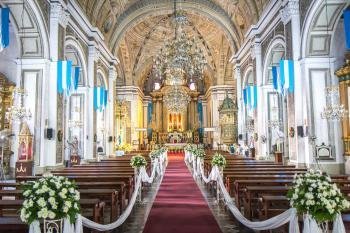
I visited just one of the churches listed, San Agustin in Manila. It is the oldest of the churches and I thought represented the site quite well.
There are two sections - the church itself and the attached monastery. Both are beautiful and very well maintained. I found the monastery really interesting because there are a lot of exhibits of artefacts and information.
Perhaps not surprisingly, the information presented was very biased. If you take it at face value, you would believe that the natives welcomed the colonising Catholics with open arms and converted straight away. Personally, I think it's a pity there isn't a more realistic depiction of what happened centuries ago.
Keep reading 0 comments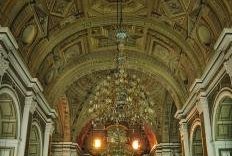
In the middle of Manila, the capital city of the Philippines, is the historic district area called Intramuros, protected by old Spanish fortifications and magnificent golf courses, while inside is crammed with post war reconstruction offices, slum and colonial buildings including the famous San Agustin Church, one of the four churches registered as WHS under the name the Baroque Churches of the Philippines. Apart from the very bad state of scaling concrete on the front facade of the church, from outside this church really looks nothing special and unbelievable to be the head-quarter of once powerful Augustinian order. However, after I opened the grand carved wooden door, I was really surprised with the very amazing interior of the church. The church is highly decorated with baroque elements; the altar and the pulpit are just lovely with pastel green colors and gilded details.
However the real star of the church is the magnificent ceiling with unbelievably beautiful trompe l'oeil, I looked at this great piece of art with surprised and hard to believe that I was in Asia while so many European arts around. The other interesting is that the church side aisles have been divided into many small chapels by the very thick wall that acted like buttress to support the church from earthquake. Another interesting from this church is that it is a very popular place for wedding; the central aisle is always decorated for wedding ceremony with many beautiful flower and white satin. I decided to …
Keep reading 0 comments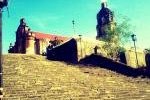
I am fortunate enough to be residing just 3 houses behind Paoay church -considered as the best example of earthquake baroque architecture. I have seen the four churches and each has its own unique characteristics. One of the better sides of visiting churches is that they have no entrance fees at all!
What makes Paoay church interesting is its rather unusual design. Prior to the Spanish era, the town of Paoay used to be called Bombay due to the presence of Indian traders near its coastal area. With the strong Hindu-Malay influences occurring within the town, oriental motifs were incorporated in the design of the church. This can be seen with the spirals on its buttresses, a highly Malay insignia. The best way to appreciate the structure is to see it from the corners of front lawn so as to see the 3D effect created by its imposing facade and wonderful rows of buttresses. Contrary to popular beliefs, Paoay church is not the oldest in the region - in fact, it is one of the youngest. It was built in 1704, while other nearby town-churches were built in the 1570s. Paoay church is made of coralstones and some bricks. The coralstones were harvested from the coastline of Pangil in the nearby town of Currimao (8Km away). Pangil boasts the longest stretch of "exposed" coral rock formations in the Philippines, ca. 2-3 km. long. Sunset photos here are superb! More photos at: https://www.facebook.com/media/set/?set=a.10150112670412613.282329.694602612&type=3
The Sta. Maria church sits on top of …
Keep reading 0 comments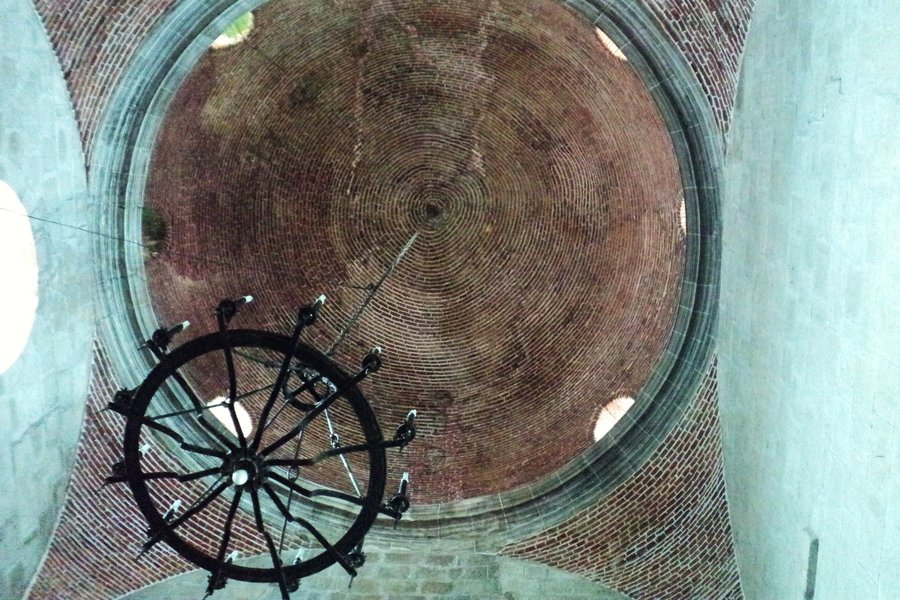
While in Manila for a brief time, my short excursion into Intramuros was enjoyable. Like others have mentioned, Manila is a somewhat chaotic city and San Agustin Church provides a brief moment of solitude. For anyone visiting Manila, there are two churches worth visiting, San Agustin and San Sebastian Church. If and when I make it back to the Philippines, I would love to visit some of the more remote churches included in this serial site. While the complex seems almost interchangeable with some churches in Latin America, if you look closely you will notice the small lion statues (guarding) the entrance of the church and other peculiar motifs.
With the 2024 tentative list update to include the 'Colonial Urban Plan' and fortifications of Manila, San Agustin Church has potential to be a double inscription. While I'm skeptical of Manila getting another inscription, its perhaps a reason for hope that Intramuros will be better protected and managed.
Lastly, like many reviewers I only visited 1 of the 4 components. While I'm pleased Manila did get a WHS, the series as a whole seem to contribute well toward the Baroque Churches OUV. Thus, I always feel slightly restricted in my overall opinion when I visit a relatively low percentage of a serial property. My visit might be further diluted by an extension that may be worthy, based on reviews within our community. My visit was memorable along with our walk throughout Intramuros, but San Agustin Church does feel like you are …
Keep reading 0 comments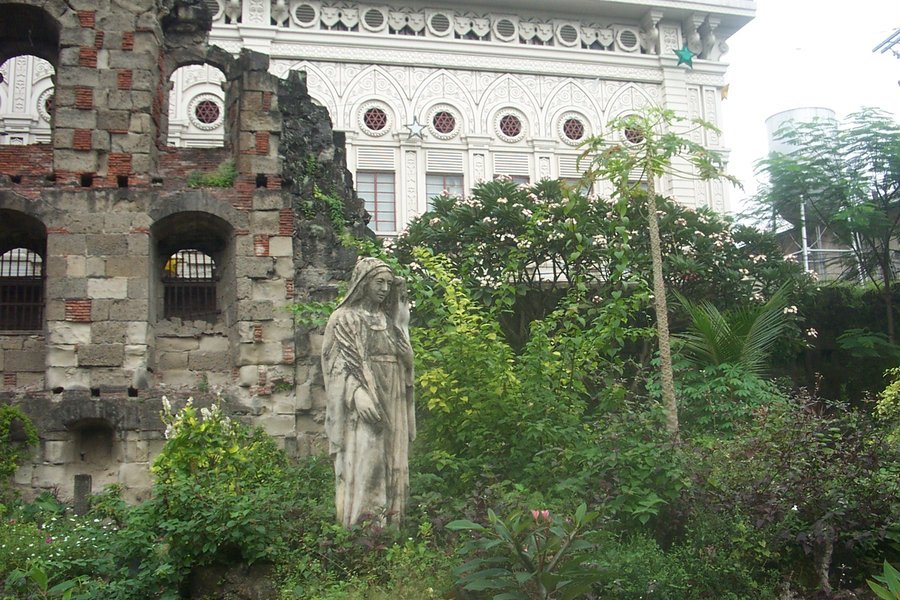
Just been to the Ilocos region to see Paoay and the Sta. Maria churches. I have visited San Agustin church in Intramuros likewise. Seeing these churches felt like I was thrown back in time.
The Paoay church surely made an impression on me. Perhaps it's because one can see the whole structure without any distractions around it and also it is very imposing, really. I loved it.
What I like in the San Agustin church in Intramuros is its grandiosity, that trompe l'oeil ceiling.
The Sta. Maria church impressed me with its location the most though.
I think something should be done for Paoay church. Its kind of falling into neglect.
Keep reading 0 comments
I visit Manila regularly and check out its beautiful churches all the time. The church of San Augustin always astound me, even if I visit it a lot of times. However, it usually is closed, but can be accessed via the monastery, which also doubles as a museum. For a sum of 100 pesos, I can visit the museum and also I am granted access to the choirloft. This gives a breathtaking view of the church. A must see! I really like the trampe'oleil paintings and the lectern on the choirloft. The exterior is very simple, actually not that impressive on my opinion but do check out the carved wooden doors on the portals and also the chinese guard dogs- a perfect example of east meets west influence.
Another notable church is the San Sebastian. It is a complete stand out, being built in Neo Gothic Style, not common in most churches in the Philippines. Also it is made entirely of steel! A rare gem. And the good part is, it is always open! Even if the portal doors are closed, just go to the small door on the right side of the church, walk past the small, office like room and to a sort of courtyard where the side portal of the church is kept open. It is usually empty. Perfect for quiet medittation and prayer.
Keep reading 0 comments
Visited Paoay and Santa Maria last March (2009).
Both churches are amazing. The huge buttresses of Paoay church are unparalleled. One can still notice the corals used to build the church. (This material is stronger than ordinary stone/brick.)
Santa Maria Church is situated on a hill - giving the impression that it was used both as a place of worship and a fortress.
Keep reading 0 comments
Hello,
I visited San Agustin Church in Paoay, Ilocos Norte this past summer. It is truly a very special exerience just to walk inside the aisle of the church and to sit infront of the main altar tp pray. The church is clean but it sure needs a lot of repairs. I hope visitors can be generous so that this beautiful church can be painted, windows repaired and stain glass windows fully cleaned. I imagine how beautiful it would be if the parish can afford to maintain it. Nevertheless, I wish God will allow me to visit this beautiful church again. nita
Keep reading 0 comments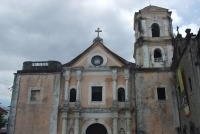
I visited the San Agustine one in Manila. The timing was bad because I couldnt see inside. But from the outside, I couldnt see very much of it's "greatness" to be submited as of the WHS.
Yet, it is surely old, and well maintaned. The statue detail is beautiful...
Keep reading 0 comments
I have just been to Miag-ao last Saturday (i was touring around Visayas even with typhoon Caloy doing its own tour all over the country :D) and i think it was resplendently beautiful. I have seen Paoay and Baclayon also but I think Miag-ao is incomparable. and i'm glad i've visited this site and have come to know more about the history of Miag-ao.
Keep reading 0 comments
San Agustin in Manila was the first Philippine Baroque church that I visited. It's located conveniently in Intramuros, Manila's small historic center, the only building to survive WWII there. From the outside, this is a bulky church with a Latin American touch. On the inside, it's more refined. It can be visited from the adjoining monastery complex, a quiet refuge from Manila's hustle and bustle.
A more exemplary exponent of the so-called Earthquake Baroque I saw in Paoay, a village 1.5 hours by bus from Vigan (Northern Luzon). This church is also called San Agustin, the Augustinians being the first order to arrive in the Philippines in 1565. This San Agustin church has a spacious setting, so you can have a look at it from all sides.
The large buttresses every few meters that keep the church standing look sturdy enough to withstand an earthquake. While I was looking around this pleasant site, an also visiting Filipino family also told me that there had been an earthquake here last night. "Oh, we have them here all the time...", they said (obviously without worrying). The San Agustin Church will undoubtedly survive a few more.
Keep reading 0 comments
I just visited Miag-ao Church and it is indeed very beautiful. We went to Iloilo for the Dinagyang Festival which is held on the last weekend of January. We went to Miag-ao and loved the rod trip going there. You should not miss having lunch at Allan's (Oton) or in Doming's (Miag-ao) for their oysters and other seafood (and they're very cheap too). The Miag-ao Church was extraordinarily beautiful - with the buttresses and the intricate design of the front facade of the Church. Too bad we weren't able to enter the Church because it was closed (I don't know if it was closed because it was a Monday or if it was because we were there during lunch time).
Keep reading 0 comments
The very first WHS I visited. San Agustin in Manila (one of the 4 listed) was where we once had a school trip. It wasnt one of the things I noticed then but I was enthralled at the ornateness (and musty smell)of this 400 year old place that is so redolent of our country's Hispanic past. I remember not being able to sleep that night because I remembered seeing a room full of tombs! Something really to remember by.
Ive been back countless times eversince and have even drove 8 hours just to see the 2 other World Heritage Churches- Santa Maria and Paoay in the Ilocos provinces and feeling as giddy as an eight-year old getting his first lollipop!
Keep reading 0 comments
